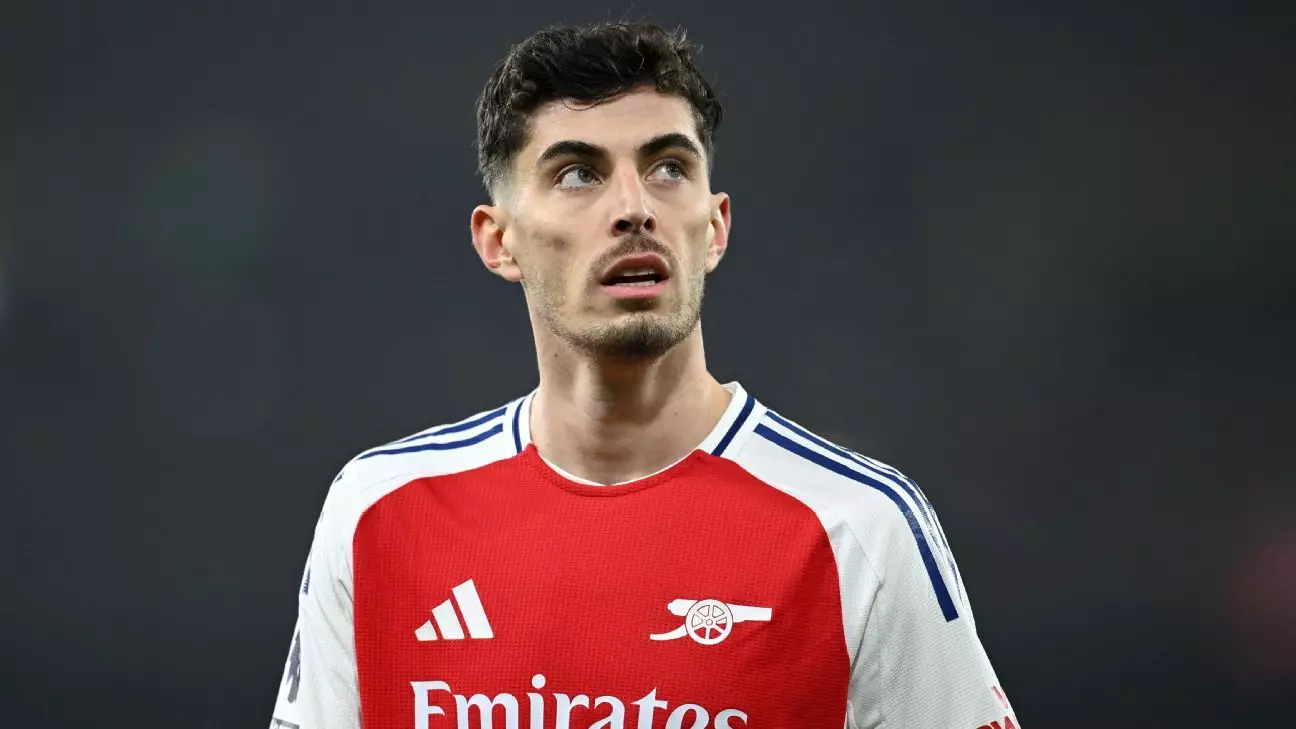Arsenal’s current situation regarding Kai Havertz’s potential injury highlights a precarious moment in their season. Reports indicate that the talented forward encountered an injury scare during the team’s winter training retreat in Dubai. Although details regarding the scope of the injury remain ambiguous, it is speculated to be muscular, necessitating further examinations. For a team navigating the challenges of a competitive league, the prospect of losing a key player like Havertz should be alarming, particularly after the earlier exit from the FA Cup against Manchester United.
Losing Havertz would represent a significant hurdle for Arsenal, amplifying their existing concerns about depth in the striker position. With Gabriel Jesus sidelined alongside Bukayo Saka due to injuries, the Gunners face the unsettling prospect of fielding a squad that lacks experienced options up front. Arteta’s earlier attempts to secure a new striker during the January transfer window fell through, leaving a glaring gap in the squad. The management had earmarked Havertz as a potential focal point for the attack, able to assume the responsibilities typically shouldered by a traditional striker.
Mikel Arteta’s confidence in Havertz is evident. The Arsenal manager has famously referred to him as a “genetic powerhouse,” a testament to his physical attributes and work ethic on the pitch. Arteta’s optimism extends to the prospect of Havertz emulating a prolific scoring run—imagine if he could contribute an additional 15 to 18 goals this season. However, the inconsistency that has characterized Havertz’s performances lately raises questions about his readiness to fulfill such expectations. The reliance on an athlete with such mixed outputs can be described as risky, particularly in a crucial phase of the campaign.
At the same time, the situation has stirred a conversation around player management and recovery. Arteta’s remarks detail his regard for Havertz’s commitment to his fitness and training regimen; he lives a lifestyle that maximizes his athletic potential. This professional approach makes any injuries particularly frustrating, as they disrupt the player’s momentum and interfere with the team’s strategic plans. It’s essential for the coaching staff to gauge Havertz’s own assessments of his condition and readiness. A mutually respectful dialogue concerning his fitness might lead to better, sustainable outcomes, particularly if he can return to his scoring form.
As Arsenal continues their training, the silver lining is Bukayo Saka’s return to light training following his hamstring setback. His rehabilitation offers a glimmer of hope as the team aims to fortify its attacking options. Amidst the uncertainty surrounding Havertz’s injury, Saka’s potential return might alleviate some of the pressure on Arsenal’s front line. The Gunners find themselves at a critical junction in their season, and maintaining a focus on recovery while preparing resilient strategies will be vital for their aspirations in both league and cup competitions. The coming days will determine if Havertz can shake off this injury scare and contribute effectively once again on the pitch.

